The NFSA recently acquired two signed photographs of Louise Lovely and a letter of hers responding to a fan in 1916.

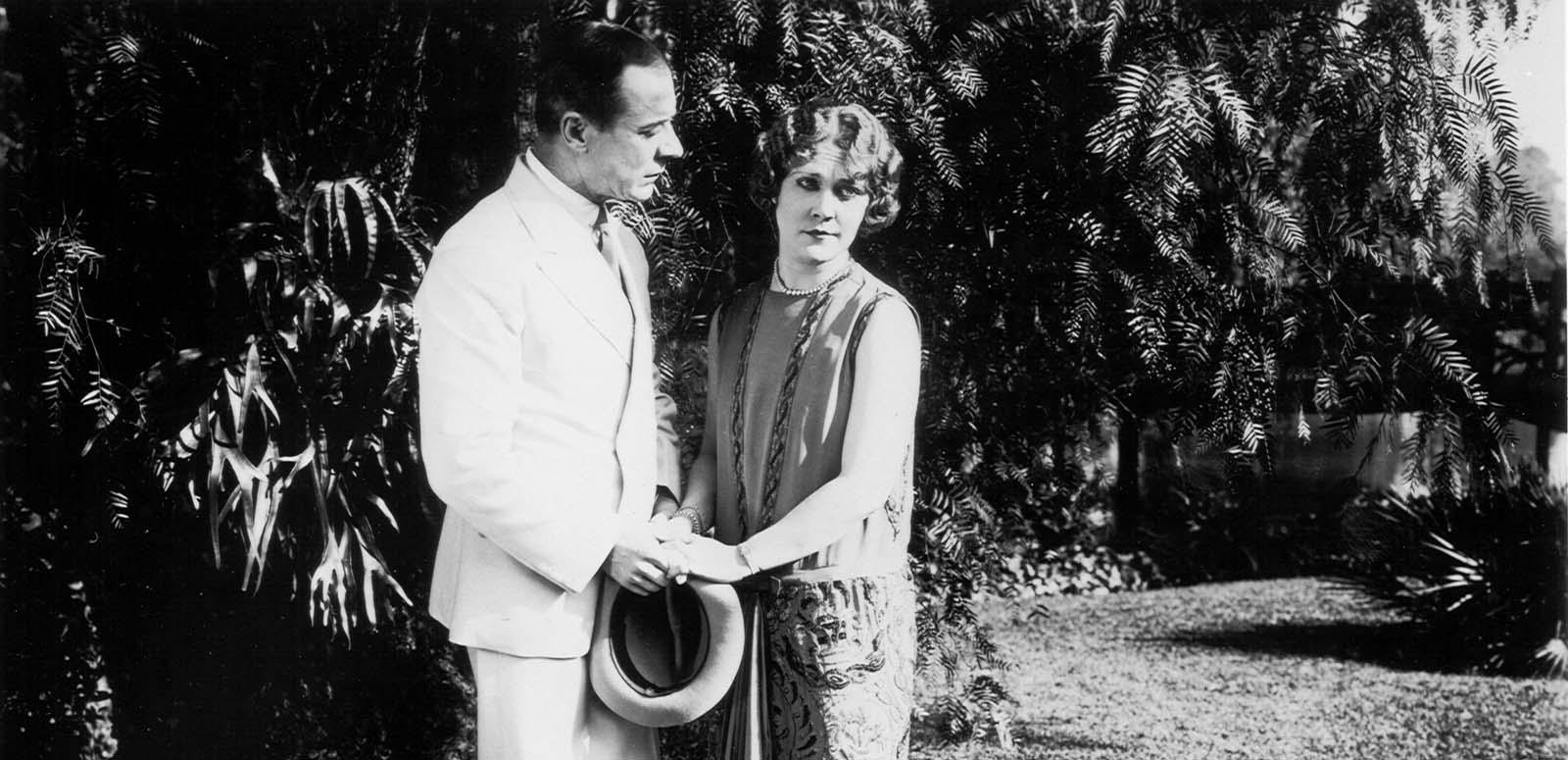
The NFSA recently acquired two signed photographs of Louise Lovely and a letter of hers responding to a fan in 1916.
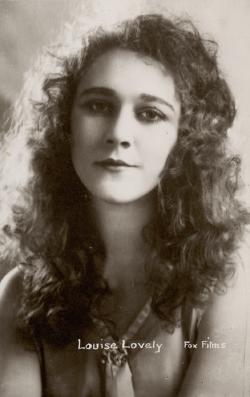
Immortality in the movie industry belongs to actors who cultivate a persona that attracts and intrigues an audience. Louise Lovely was just such an actor - a woman whose photographic portraits, even 92 years after her movie career ended, still fascinate us.
She was warm, meticulously well-mannered and could adroitly deflect questions that might reveal facts that she did not wish to publicise, such as her illegitimate birth. Supposedly born Nellie Louise Carbasse in 1896, she was in fact born Louise Lehmann, daughter of a Swiss mother, in Paddington in 1895.
Her American career dating from 1914 required further reinvention, beginning with a command from Universal Studios to dye her hair blonde and become Louise Lovely.
After returning to Australia in 1923, Louise starred in Jewelled Nights (1925), a film she also co-wrote and co-directed. Despite its popularity, the film failed to recoup its costs. It was to be Louise's final film.
Recently the NFSA acquired two photographs signed by Louise Lovely and a letter of hers responding to a fan in 1916.
The letter and photograph addressed to ‘Gladys’ refer to Bettina Loved a Soldier (Rupert Julian, USA, 1916), the Bluebird Photoplay made by Universal Studios that Louise always referred to as her favourite picture from this era. You can see the images and read the letter in the photo gallery below.
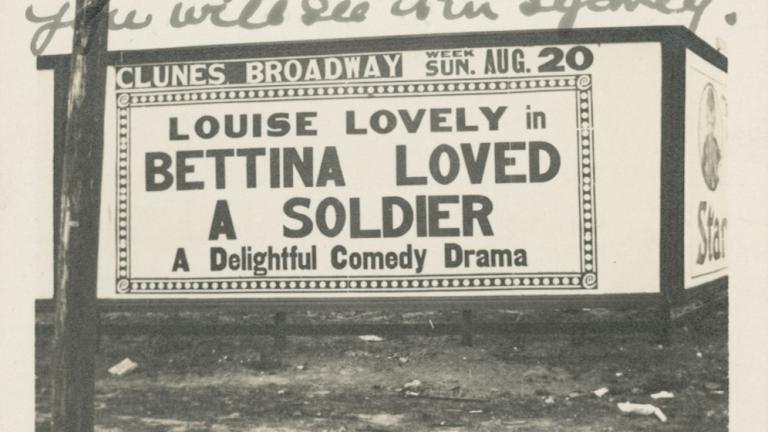
Bettina Loved a Soldier wall advertisement, 1916. NFSA title: 744145. Click on image to view.
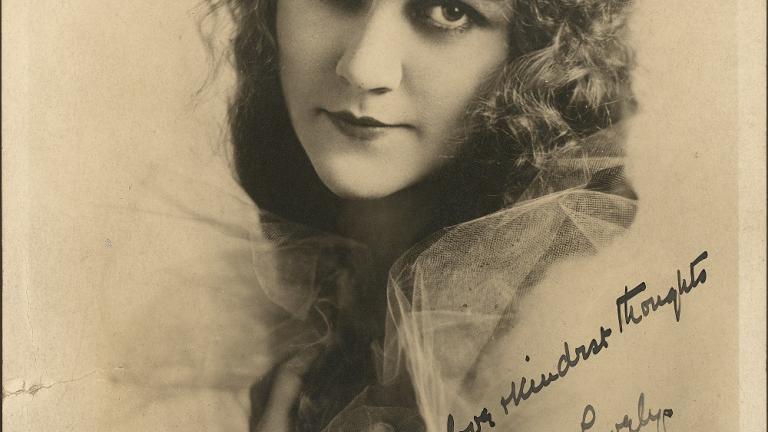
Louise Lovely signed fan photo for Gladys reads, 'To Gladys, with love and kindest thoughts, Louise Lovely, 1916'. NFSA title:1529005. Click on image to view.
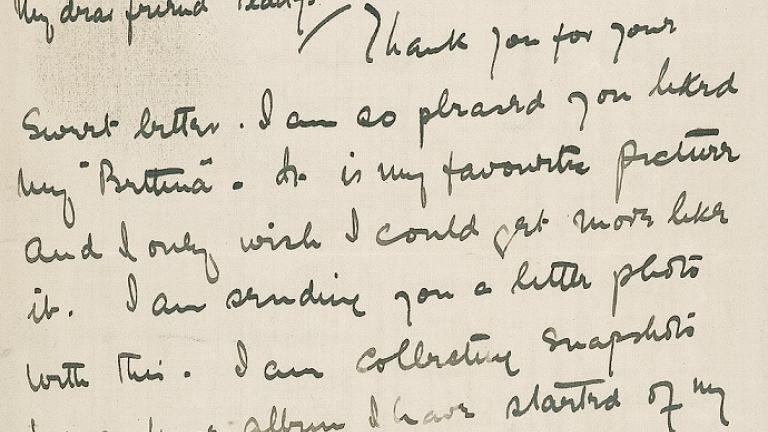
Louise Lovely fan letter to Gladys, 1916. NFSA title:1529019. Click on image to view.
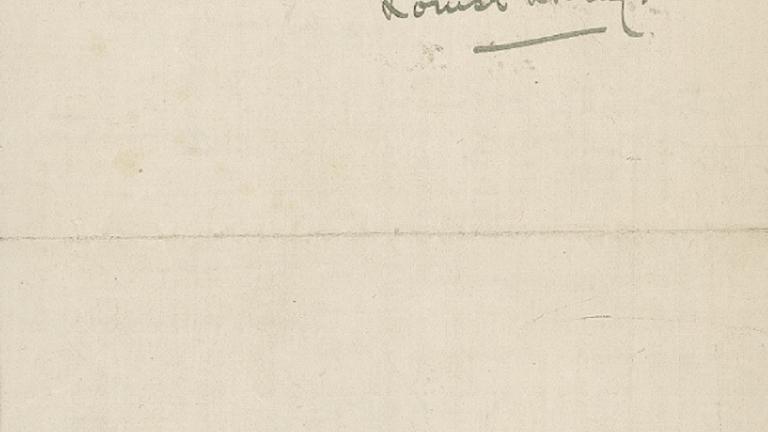
Louise Lovely fan letter to Gladys (verso), 1916. NFSA title: 1529019. Click on image to view.
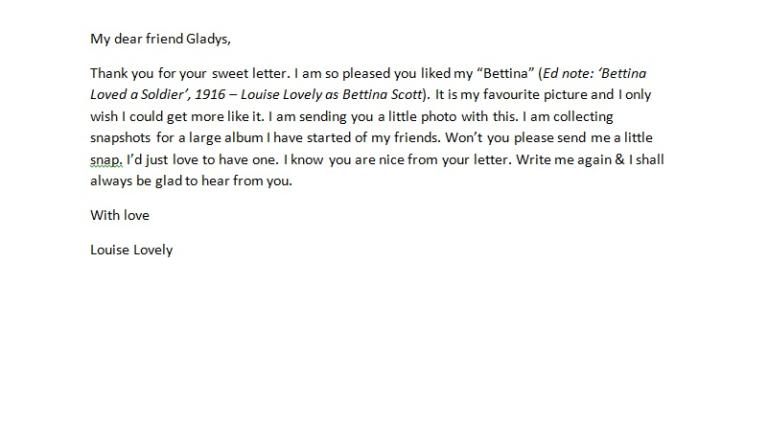
Louise Lovely fan letter to Gladys (transcript), 1916. Click on image to view.
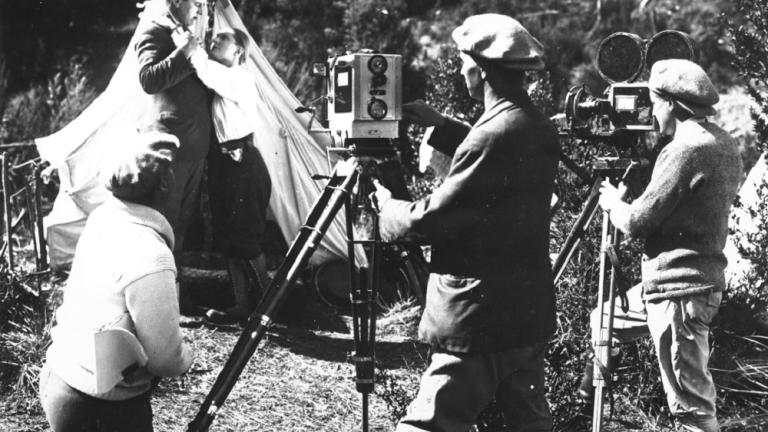
Filming a scene for Jewelled Nights, 1925. NFSA title: 590532. Click on image to view.
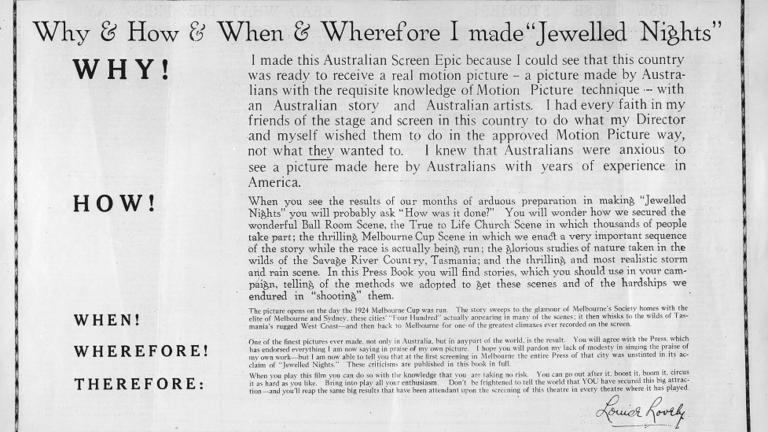
Cinema advertisement for Jewelled Nights, 1925. NFSA title: 444051. Click on image to view.
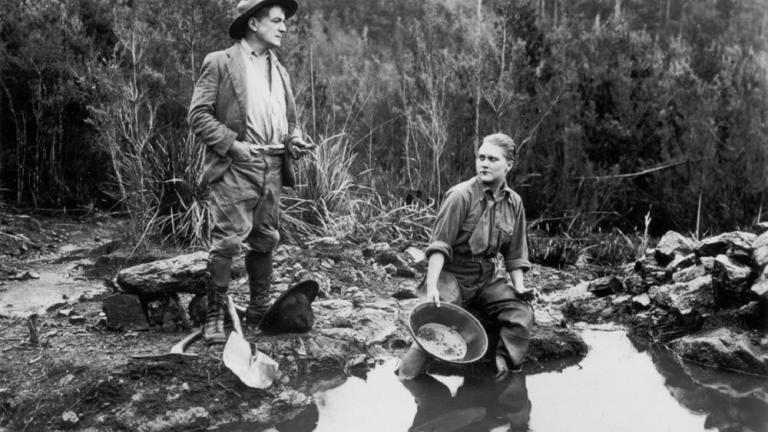
Louise Lovely (r) disguised as a man in a scene from Jewelled Nights, 1925. NFSA title: 590173. Click on image to view.
Louise liked Bettina’s character as she describes in an interview with Ross Cooper in 1970: ‘She was a real girl to me. It was a lovely film really. It was a French story, about L’Abbe Constantin – a costume show.' Louise’s response to Gladys reflects the actress’ pleasure in her performance and the letter conveys the fresh enthusiasm of a 21 year old starting out on an exciting career.
When asked about fan mail, Louise responded, ‘Well, yes, and do you know the biggest fan mail I got was from Japan. They … christened me the Cherry Blossom of Japan or something ... And I used to get a lot of presents … beautiful etchings and Japanese dolls.’
The Moving Picture Weekly certainly believed that Louise was perfect in the Bluebird costume films. 'To the rare accomplishments of the clever actress, Louise Lovely is gifted by nature to add just the physical charm and looks bewitching crinolines and jaunty headgear of other days … her type of beauty fits eminently for the screen, and the camera – which is so cruel to so many extremely beautiful women – is more than kind to her.'
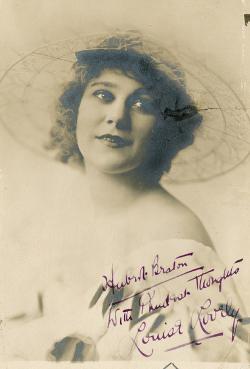
The second photograph (left) is a portrait from a later era when Louise had embraced the shorter hair of the New Woman. Louise attributed the bob to an accident on set when an overly enthusiastic director fanned the flames closer to her head to make a fiery scene look more realistic.
By the time Louise moved to Fox studios in 1919, Picture Show magazine was pleased to announce that the actress received over a thousand letters a week, reportedly piled high inside the office attached to her dressing room. It was a matter of pride that she tried to answer as many of these letters as possible, but she confessed in an interview with Ina Bertrand, ‘When I left Hollywood I had bags and bags and bags I’d never answered. I couldn’t keep up with it.'
While most of the fan mail expressed conventional admiration, there was the occasional proposal of marriage and Louise remarked of these ‘serious’ letters with characteristic grace, ‘You had to be very careful answering those’.
Main image: Louise Lovely (right) in a scene from Jewelled Nights (Louise Lovely and Wilton Welch, Australia, 1925).
The National Film and Sound Archive of Australia acknowledges Australia’s Aboriginal and Torres Strait Islander peoples as the Traditional Custodians of the land on which we work and live and gives respect to their Elders both past and present.